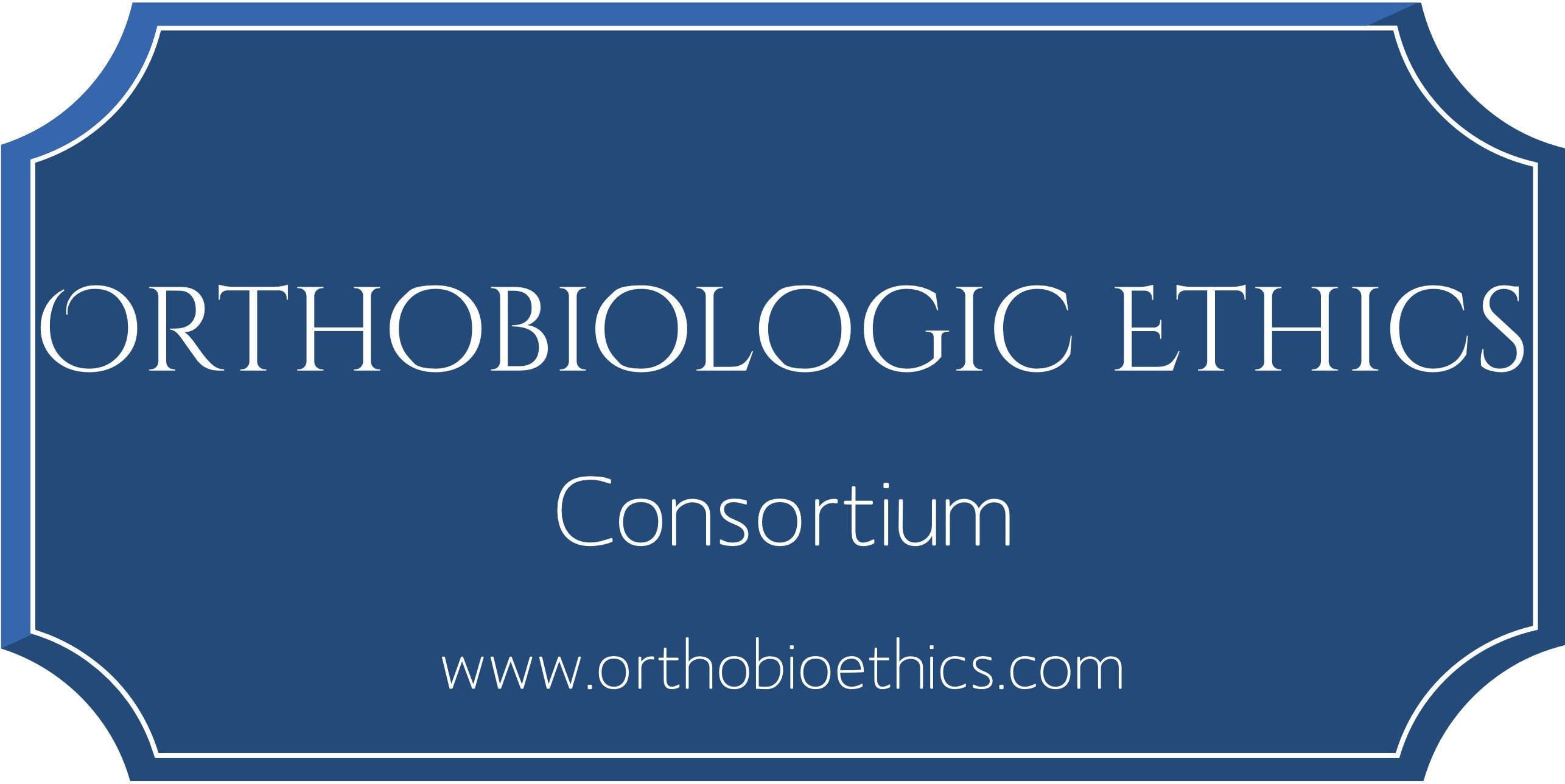Last rev. January 24, 2019
Ethical Guidelines for Orthobiologics
For the purpose of this document, orthobiologic modalities are defined as living cells or other substances or materials that can affect the healing of bone, cartilage, tendon, ligament, muscle, or nerve. Typical orthobiologic therapies currently include stem cells, macrophages, leukocytes, pericytes, RBCs, cytokines, growth factors, platelet rich or poor plasma, serum, extracellular matrix, fat grafts, and other tissues. The guidelines expressed in this document are not meant to be all-inclusive and are best viewed as a collaborative living document with the flexibility for modification and refinement as the growing specialty of orthobiologics matures.
-
Clinicians should practice within the scope of practice of their training and specialty. Providers commonly trained to see neuromusculoskeletal injury such as Physiatrists, Orthopedic Surgeons, Interventional Pain Physicians, Family Practice with a Sports Fellowship, or other disciplines where significant structured academic orthopedic training has been pursued should only treat patients with neuromusculoskeletal injuries. For example, Orthopedic Surgeons or Physiatrists treating patients with multiple sclerosis or pulmonary fibrosis or dementia with an IV infusion of a biologically active substance would be outside their specialty training. Similarly, an Anesthesiologist or Internist evaluating and treating a patient with a chronic orthopedic condition such as degenerative joint disease of the knee, or a tendinopathy or ligament injury would be outside their traditional training. Since there is no Specialty Board for Orthobiologics in the US, clinicians without formal musculoskeletal training in residency or fellowship programs who are interested in practicing in this field are encouraged to seek training thru post-graduate educational opportunities.
-
The decision to add orthobiologic modalities into a treatment plan for a patient typically requires a medical history, physical exam, image ordering and interpretation, and medication evaluation. These skills usually constitute the practice of medicine and as such fall under the scope of practice of a licensed physician or independent health care provider such as a Nurse Practitioner. Non-physician or non-independent providers who require physician oversight should only use orthobiologic modalities to the extent that it falls within their scope of practice and State Board guidelines. If a mid-level provider is required to have physician oversight as defined by their State Licensing Medical Board, that requirement should be followed for orthobiologic procedures.
-
Any clinician using orthobiologic modalities should comply with all applicable state and federal laws, regulations, and guidance documents.
-
Informed consent for orthobiologic procedures should include discussion of published human outcomes relevant to the specific procedure to be performed. Clinicians may also discuss outcomes solely based on their personal experience. For example, placing a claim on a web-site that “80%” of patients get improvement is unethical unless it’s substantiated by at least case series data. However, discussing a clinician's personal experience with the patient that about 80% of patients get improvement is consistent with appropriate ethical behavior.
-
If research is posted in a publicly accessible location, it should be research that represents the procedure under consideration. For example, if a provider is using stromal vascular fraction from adipose tissue, posting research that used culture expanded mesenchymal stem cells would be inappropriate.
-
Marketing and advertising claims made about the biological content or activity of a product should be substantiated and publicly available. If the claim of an orthobiologic product does not have reasonable, publicly available data, then advertising may constitute consumer fraud.
-
When using investigational procedures, substances, or devices clinicians are encouraged to collect registry data and to make such information publicly available thru publication or other means when appropriate.
-
All new orthobiologic interventions should have appropriate lab or animal models using the specific live cell or product showing evidence of beneficial effect before use in humans. Safety and efficacy of new orthobiologic modalities should be established in small pilot trials, after documented evaluation from an independent Institutional Review Board (IRB).
